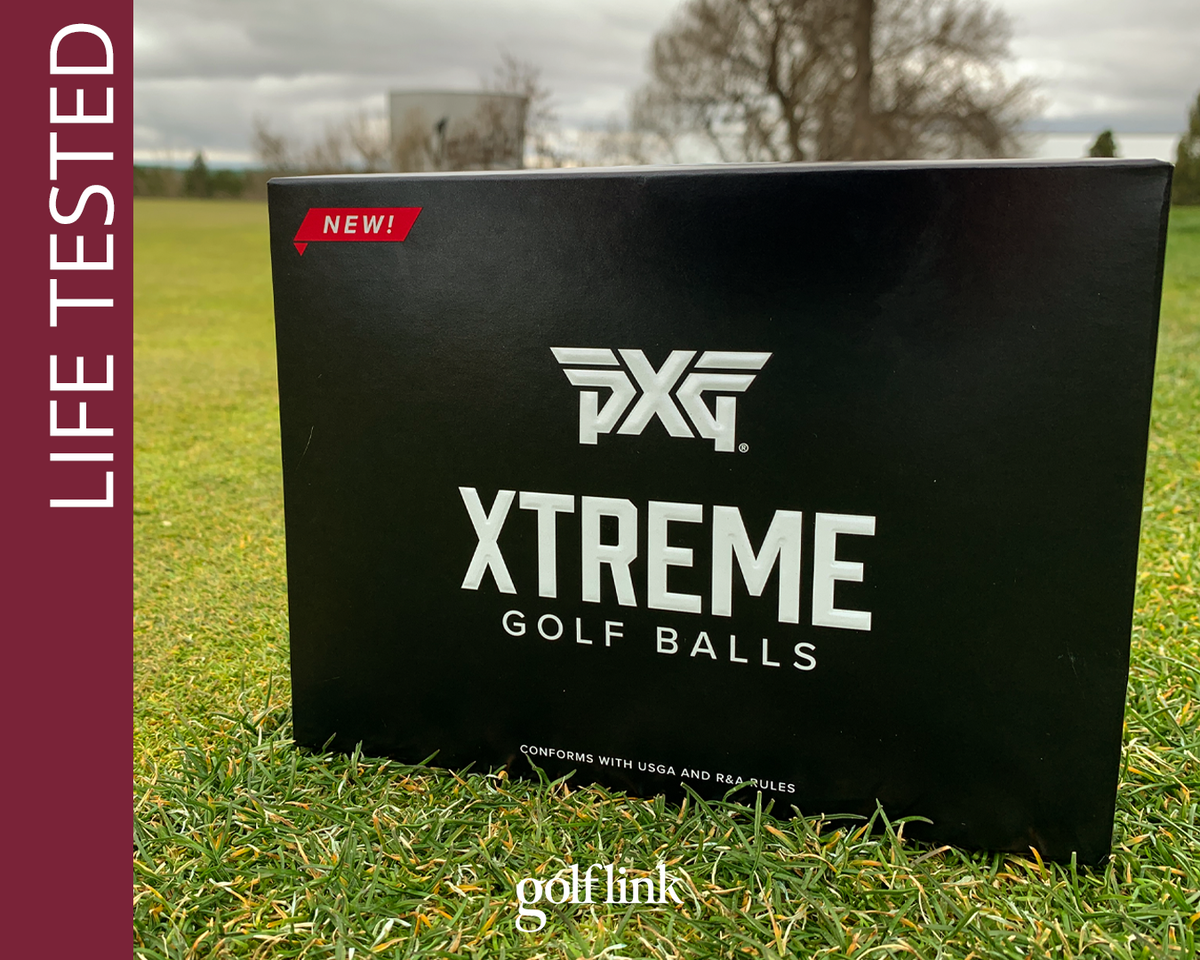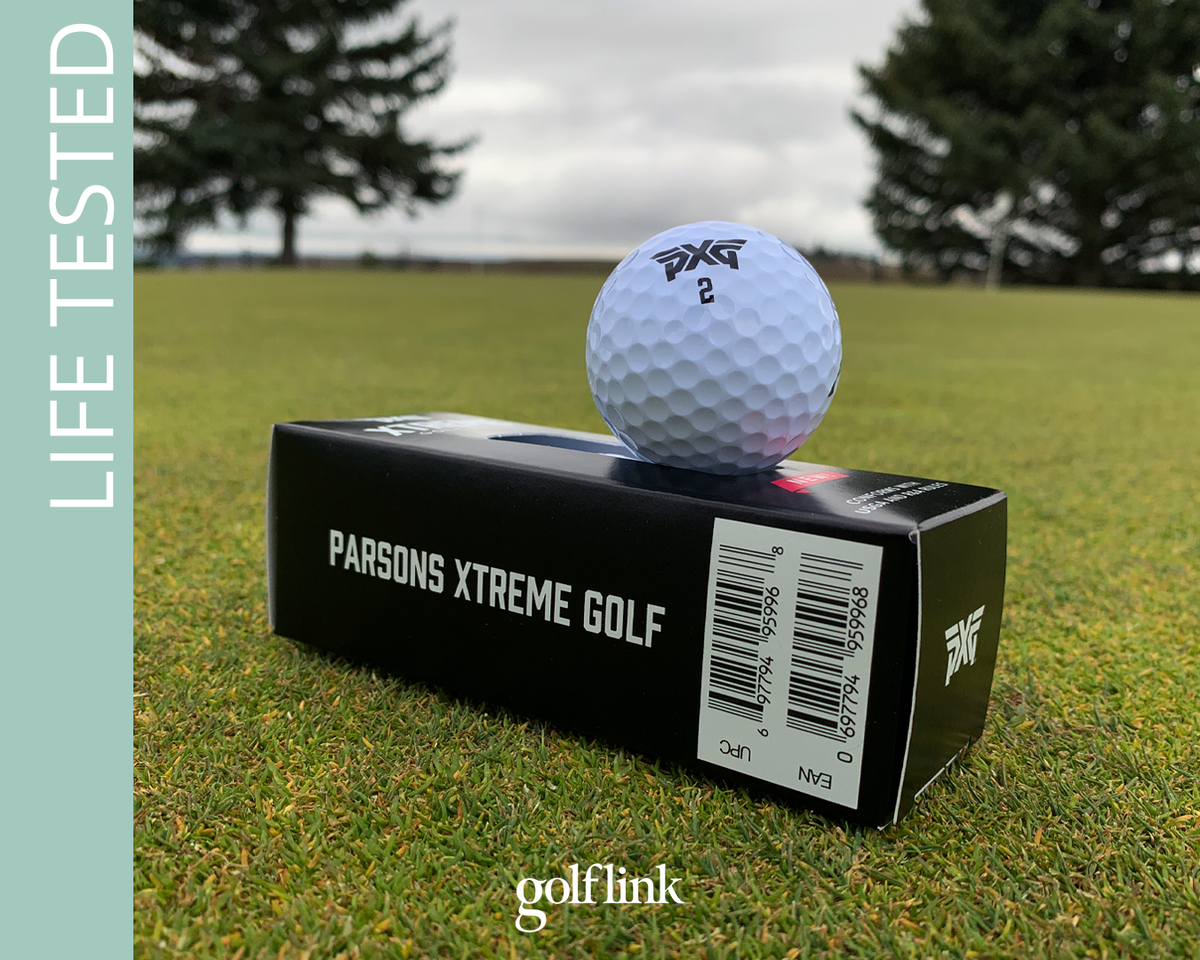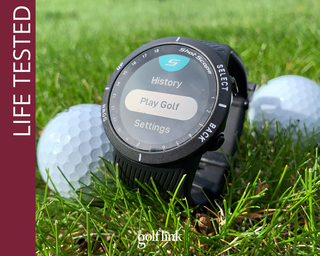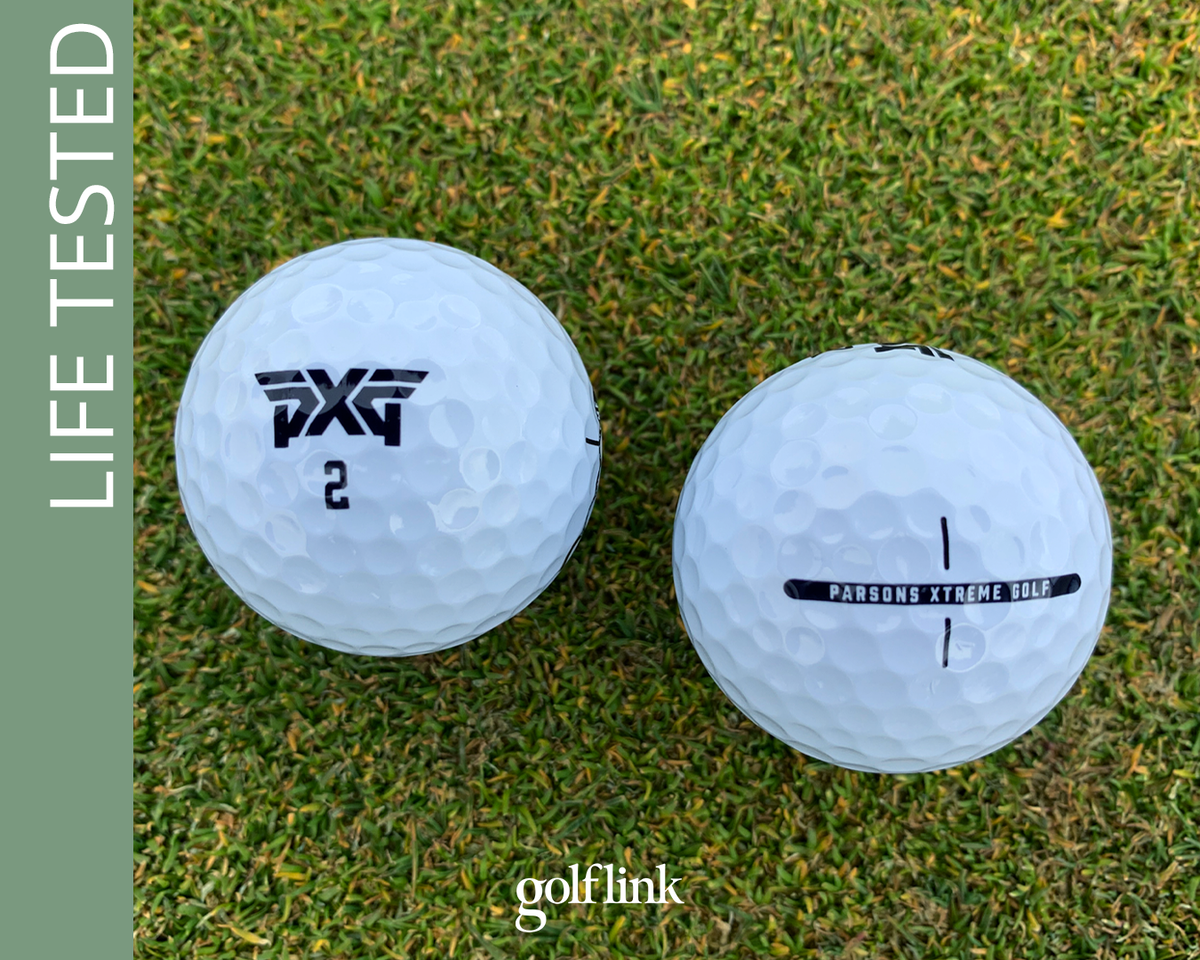PXG Xtreme Golf Ball Life-Tested Review
Here's what I learned from testing the PXG Xtreme golf ball

Nearly 10 years after PXG was founded, we have the first PXG golf ball, perhaps not surprisingly dubbed PXG Xtreme Golf Balls. From a construction standpoint, these PXG golf balls are a premium ball, begging mid- and low-handicap players to put it in play. Meanwhile, the price point suggests it’s a value buy. Of course, many golf balls are both, so I put the PXG Xtreme golf balls in play on the course and the practice facility to see exactly how it performs. Find out in this PXG golf ball life-tested review.
PXG Xtreme Golf Balls: What You Need to Know

The cover of the PXG golf balls is a very bright white
PXG’s premium, 3-piece, urethane-covered golf ball is intriguing at just under $40 per dozen. In my on-course testing, I hit some personal-best driver-distance numbers with the PXG Xtreme golf ball, found it to be responsive in the short game, and was very impressed with its stopping-power on approach shots. I found the biggest drawbacks to be the ball’s firm feel and clicky sound in the short game.
The PXG Xtreme golf ball leans toward the higher-spin category, which is why it delivers impressive results holding greens, and better players will enjoy that workability with the irons, while high and mid-handicappers may prefer a straighter-flying ball.
At the price point, it’s a strong contender for good players who want a premium, performance golf ball without paying top-shelf price.
PXG Golf Ball Review
Pros:
- Maximum distance
- Excellent stopping power
- Workable
- Bright white cover
- Excellent value
Cons:
- Firm feeling in the short game
- Wider dispersion than some competition
I spent hours putting, chipping, and playing on the course with the PXG Xtreme golf ball. I also compared my notes with independent testing comparing the PXG Xtreme to Titleist’s ProV1 and ProV1x – the benchmarks that all urethane golf balls are compared to – to help quantify my findings. Here’s how the PXG Xtreme golf ball performed in every category.
Distance
I can’t promise you’ll get the same results, but in one full round testing the PXG Xtreme golf ball on the course, I set a personal best for average driver distance in a round, and I also hit my longest drive on record (I map every shot I hit using Shot Scope, so I can easily reference these stats down to the yard).

Shot Scope V5 GPS Golf Watch Life-Tested Review
I’m not trying to convince you that you’ll instantly gain noticeable distance by switching to the PXG golf ball, but I know some players are worried they would lose distance with the PXG golf ball, and from experience, I believe you’re much more likely to gain some distance off the tee with the PXG Xtreme golf ball.
Speaking of off-the-tee performance, here’s how the PXG Xtreme compared to the Pro V1 and Pro V1x for 85 mph, 100 mph, and 115 mph swing speeds in independent testing performed by Golf Laboratories.
|
Ball |
Total Distance (85-100-115) |
Offline Dispersion (85-100-115) |
|
PXG Xtreme |
228.0 | 279.9 | 326.0 |
5.5 | 9.5 | 13.3 |
|
ProV1 |
229.7 | 281.1 | 325.2 |
5.3 | 8.8 | 8.9 |
|
ProV1x |
228.8 | 282.2 | 329.2 |
8.5 | 10.2 | 7.6 |
Spin
The PXG Xtreme is a slightly higher-spin ball across the board than both the ProV1 and ProV1x. This gives it an edge with stronger stopping power on the greens with full iron and wedge shots, and the trade-off – if you want to call it that – is a wider offline dispersion with those clubs. The reason for the caveat is that some players want a ball that’s more workable, while others – myself included – prefer a ball that flies as straight as possible.
Here’s how the spin rate of the PXG golf ball compared to the two ProV1 offerings from tee to green with a medium swing speed. See the complete results from Golf Laboratories’ testing for how these numbers compared for slower and faster swing speeds.
|
Ball |
Driver |
7-Iron |
Wedge |
50-Yard Pitch |
|
PXG Xtreme |
2640 |
4736 |
8043 |
7298 |
|
ProV1 |
2551 |
4370 |
7223 |
6876 |
|
ProV1x |
2467 |
4492 |
7356 |
7037 |
Approach
My first swing from the fairway with the PXG Xtreme golf ball was with a hybrid from 192 yards out with water guarding the left side of the green. My expectations were low, but what I saw the ball do on this particular shot was perhaps its most impressive performance of my testing. It faded softly off the right side of the green, landed right in the middle, and stopped on the green about 10 feet from its pitch mark.
Even though I just said I prefer a straighter-flying ball – one that trades stopping power and workability for tighter dispersion – this one shot had me seeing the other side. I never would have shaped that shot into the green, and likely wouldn’t have even held the green from that distance, with a lower-spin and straighter flying ball.
The PXG Xtreme is long, it's workable, and it delivers excellent stopping power. That comes in exchange for some left-to-right dispersion, a characteristic many players will not only accpept, but prefer.
Here’s how the PXG golf ball stacked up against the ProV1 offerings with a 7 iron from slow, medium, and faster swing speeds.
|
Ball |
Total Distance |
Roll |
Offline Dispersion |
|
PXG Xtreme |
152.4 | 192.2 | 200.9 |
17.9 | 19.2 | 13.5 |
2.8 | 7.1 | 10.4 |
|
ProV1 |
156.7 | 196.2 | 204.5 |
20.3 | 21.2 | 14.3 |
2.6 | 5.7 | 8.4 |
|
ProV1x |
154.1 | 191.5 | 200.3 |
19.2 | 19.4 | 13.5 |
2.4 | 4.4 | 8.9 |
Short Game
Before I even took the PXG Xtreme golf ball onto the course, I spent at least an hour, over multiple sessions, putting it through its paces on the practice green, hitting all sorts of chips, pitches, and putts.
I found it to be pretty easy to manage distance control in the short game – stopping it where I intended to – with the PXG golf ball, thanks to the higher spin it delivers around the greens. This anecdotal evidence was confirmed in Golf Laboratories' independent testing. The PXG golf ball launched slightly lower and spun more than both the ProV1 and ProV1x in the 50-yard pitch test, and fell between the two Titleist balls in stopping-power from that distance.
|
Ball |
Launch Angle |
Spin |
Roll (yds) |
|
PXG Xtreme |
27.1 |
7298 |
5.2 |
|
ProV1 |
28.0 |
6876 |
4.8 |
|
ProV1x |
27.7 |
7037 |
5.6 |
Look, Feel & Sound

Here's a look at the reticle alignment aid on the PXG golf ball
Every advantage a golf ball offers comes with trade-offs. We just talked about how increased stopping-power is seemingly inseparably tied to wider dispersion. Similarly, more distance is often tied to a sacrifice in feel. A firmer ball goes farther, but doesn’t feel and sound as nice as a softer one, and that’s the case with the PXG Xtreme golf ball. It’s a firmer ball, and feels that way around the greens.
This, of course, all depends on how in-tune you are with the feel of various golf balls. If you can’t tell a ProV1 from a ProV1x after hitting a chip shot with each, you probably won’t notice or care about the firmer feel of the PXG golf ball. Quite honestly, I probably wouldn’t have if I weren’t paying close attention specifically so I could describe the feel in this review.
Lastly, the PXG Xtreme golf ball is marked with a reticle alignment aid. There’s a heavier line flanked by two lighter perpendicular lines, which helps not only align the ball to your intended line, but square the putter to that line. The cover itself is a noticably brighter white than other balls.
Value
If you’re comparing the PXG Xtreme to the Titleist ProV1 and ProV1x, Titleist has an overall advantage, albeit a relatively narrow one. However, dollar-for-dollar, that’s a different story. The PXG golf ball checks in at just about $40 per dozen, while the Titleist balls are $55 per dozen.
Considering just how competitive the PXG golf ball is with Titleist’s tour offerings, it’s a great value at an almost 30% discount compared to the ProV1.
I can’t speak to the ball-to-ball consistency of the PXG golf balls – which is one huge area where Titleist often blows away any competition – but for the mid- to low-handicap golfer who wants to play a performance golf ball in the $40 per dozen range, the PXG Xtreme is an excellent option.
Who Should Play the PXG Xtreme Golf Ball
The PXG Xtreme is an impressive golf ball and should be a consideration for wide range of better players, I’d call it those in the 3-15 handicap range.
It’s a great ball for mid to low-handicap players who want maximum distance, stopping power, short-game control, and value, and are willing to sacrifice some feel. I doubt better players who don’t mind spending $55 for a dozen ProV1s would necessarily gain anything, other than saving some money, by switching to the PXG Xtreme, but I highly doubt they’d notice any dropoff in performance either.
For higher handicap players, I recommend a ball that prioritizes straighter flight in exchange for some of that stopping power.